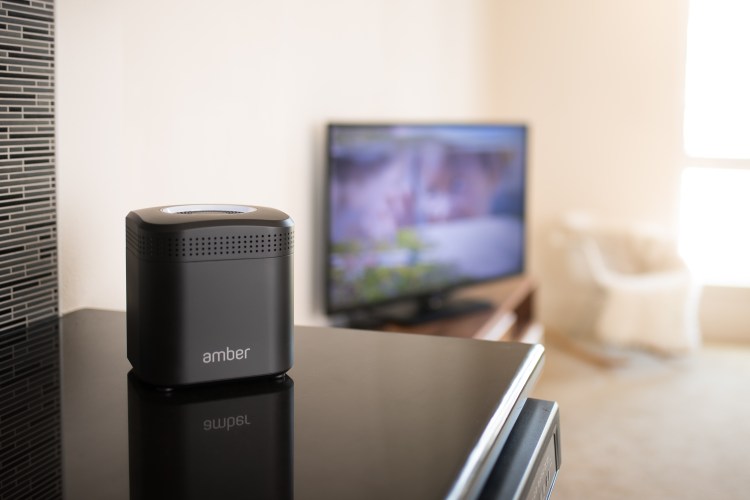Watch all the Transform 2020 sessions on-demand here.
It seems nary a week goes by without a breach that compromises millions of personal files. On Monday, Google revealed that it will shut down its social network, Google+, months earlier than initially planned after the profiles of tens of millions were inadvertently exposed. In September, Facebook revealed that hackers had gained access to data belonging to 50 million people. And those are just the tip of the iceberg. The problem is troublingly widespread — according to the Ponemon Institute, 54 percent of companies experienced one or more successful attacks this year.
The stats are enough to frighten anyone away from cloud storage, and they’re one of the reasons Pantas Sutardja, cofounder and ex-CTO at chipmaking giant Marvell, pursued a business focused on securing personal data. His San Jose startup — Latticework — emerged from stealth this summer, with 100 employees and an in-house hybrid cloud infrastructure dubbed LatticeNest. With $13 million in seed funding from Tyche Partners and individual strategic investors, the company is now gearing up to launch its first product: Amber, a smart storage platform with artificially intelligent features.
“Every year, consumers are generating trillions of photos and 10 to 100 times more video data by phone,” Sutardja told VentureBeat in a phone interview. “They have a huge issue concerning how to store it securely for the long term. Frankly speaking, [cloud storage companies] are giving them free storage just so that they can do advertising, and while they only sell part of users’ data, they often leak … data that they didn’t intend to. We want to come in and solve this by unifying data across the cloud and personal devices.”
Amber is a cube-shaped network-attached storage (NAS) device with rounded corners and an Amazon Echo-like glowing LED ring on its top. It measures 6.5 inches across and weighs about 5 pounds, and it packs an Intel Core Duo (Gemini Lake) processor clocked between 1.1GHz and 2.6 GHz and a pair of hard drives (1TB or 2TB, depending on the configuration) in RAID 1 configuration. There’s an AC2600 Wi-Fi router thrown in for good measure, plus a bevy of ports, including HDMI out, two gigabit Ethernet ports, WAN ports, and two USB 3.0 ports — one USB-C and a USB Type A.
June 5th: The AI Audit in NYC
Join us next week in NYC to engage with top executive leaders, delving into strategies for auditing AI models to ensure fairness, optimal performance, and ethical compliance across diverse organizations. Secure your attendance for this exclusive invite-only event.

Amber is intended to be used as more than merely a repository, though. Thanks to its capable silicon, it’s able to index files as they’re added and deleted and to transcode and stream media at a variable bitrate. Additionally, for customers who take advantage, Amber can copy the whole of its contents to Latticework’s aforementioned LatticeNest cloud network, which is available at no additional charge. (In the future, expanded backup will be available for a fee.)
Sutardja says LatticeNest — which is hosted on Latticework’s own servers in a colocated datacenter — uses techniques like identity management and data routing verification to ensure personal data remains under lock and key. And in the interest of privacy, Latticework collects only the personal information necessary for two-factor authentication and baseline file-sharing functionality.
To that end, Amber’s got a companion app — LiFE — for Android, iOS, macOS, and Windows devices that bidirectionally syncs photos, videos, music, and other files wirelessly. Much like Google Photos and Apple’s Photo Stream, pics are optionally uploaded in the background and automatically categorized by on-device facial recognition algorithms. (These will soon recognize pets, Sutardja said.) On the entertainment front, the LiFE app supports Google Cast, allowing users to stream stored videos from Amber to Chromecast or other Cast-enabled devices on their local network, and support for AirPlay is on the way.
It’s not an entirely in-home affair. Amber owners can stream and access files remotely, on the go, over a TLS/SSL-encrypted connection. And the LiFE app’s sharing features allow users to create groups of contacts and share content to anyone via LatticeNest or anonymous links, even if the recipient doesn’t own an Amber.
“Basically, you store your data locally, but your data is always [available] at a moment’s notice,” Sutardja said. “It can be attached to the cloud and shared with anybody in the world.”

For Latticework, Amber’s just the start. Sutardja intends to iterate on the hardware and release new, more capable models in the future, potentially with purpose-built AI accelerator chips — à la the Neural-Network Processing Unit (NPU) in HiSilicon’s Kirin mobile processors. He predicts upgrades will drive the bulk of Latticework’s income, with an expanded LatticeNetwork that’s open to anyone as a supplementary revenue stream.
As for the first-generation Amber, work has already begun on Amazon Alexa and Google Assistant integration and — more ambitiously — an in-house voice recognition system that will run offline and on-device.
It’s an ambitious vision, and also an expensive one — some folks might balk at Amber’s $550 price tag (currently available at the promotional price of $399). Sutardja argues that it’s a small price to pay for peace of mind — and the features coming down the pipeline.
“We see Amber as a device that’s eventually going to grow into [a] personal home assistant,” Sutardja said. “If it’s going to be [a] data vault where all your data will be collected, why not add [an intelligent] layer that’s private, instead of relying on a public a system that may or may not take your data? We are very, very privacy-driven — we’ll do everything that we can do locally.”


